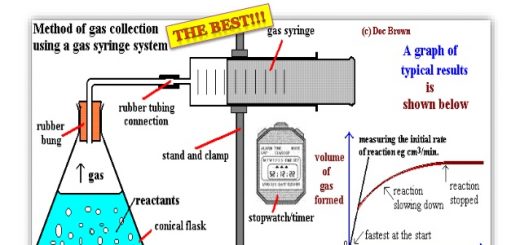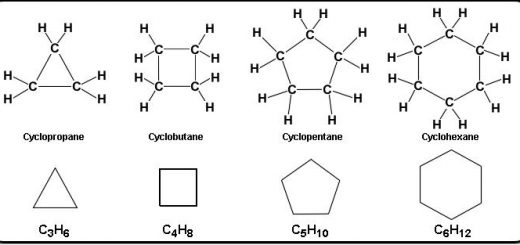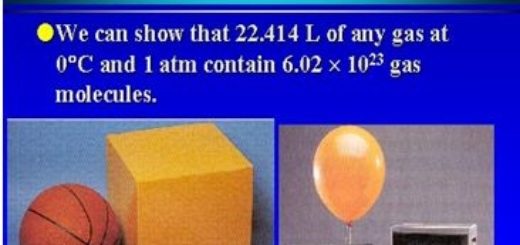Balanced chemical equations, Law of conservation of matter (mass) and Law of constant ratios
The compound is a substance formed from the combination of atoms of different elements as due to a chemical reaction between them, The chemical equation should be balanced to achieve the law of conservation of matter (mass), the number of atoms of each element in the reactants must equal the number of atoms of the same element in products.
Chemical reaction
The chemical reaction is the breaking of the existing bonds between the atoms of the molecules in the reactants and forming new bonds between the atoms of the molecules in the products.
When you hold a piece of magnesium ribbon by a test tube holder and burn the ribbon in the air, the solid magnesium ribbon burns and changes from a bendable bright solid into white powder of a new substance. Magnesium reacts with atmospheric oxygen (reactants) to form a new substance which is magnesium oxide (product).
Magnesium + Oxygen → Magnesium oxide
2Mg + O2 → 2MgO
Heat energy has broken the double covalent bond in an oxygen molecule (O2) to give two active oxygen atoms. Each oxygen atom combines with a magnesium atom to form a molecule of magnesium oxide by an ionic bond. A white powder is formed when a magnesium ribbon is burned in the air due to the formation of magnesium oxide (white powder) as a result of a combination of oxygen with magnesium.
The mass of white powder formed from burning of a magnesium ribbon is more than the mass of the ribbon before burning as a result of the combination of oxygen with magnesium. The mass of magnesium is increased when it is burned because it combines with oxygen forming magnesium oxide.
Chemical equation
A chemical reaction can be represented by “Chemical equation“, Chemical equation is a set of symbols and chemical formulas representing the reactants and products’ molecules in the chemical reaction and it represents the conditions of the reaction as well.
The word equation and symbolic equation expressing the reaction of magnesium with oxygen. The chemical equation must be balanced that means: the number of atoms of each element in the reactants must equal the number of atoms of the same element in products.
Reactants (are substances that take part in the reaction) → Products (are substances that are formed at the end of the reaction)
Word equation: Magnesium + Oxygen → Magnesium oxide
Symbolic equation: 2Mg + O2 → 2MgO
The balanced chemical equation
The balanced chemical equation is an equation in which the number of atoms entering a reaction equals the number of atoms resulting from this reaction. How to balance the symbolic equation that expresses the reaction of hydrogen gas with oxygen gas to form water: H2 + O2 → H2O.
To balance the equation, you must compare between the number of atoms of each element in reactants and the number of atoms of the same element in products. When comparing the number of hydrogen atoms and oxygen atoms in reactants and products as follows:
H2 + O2 → H2O
We find that the chemical equation is not balanced as the number of oxygen atoms in reactants is more than their number in products. To balance the number of oxygen atoms, it must be multiplied 2 × H2O as follows:
H2 + O2 → 2 H2O
We find that the chemical equation is not balanced as the number of hydrogen atoms in reactants is less than their number in products. To balance the number of hydrogen atoms, it must be multiplied 2 × H2 as follows:
2H2 + O2 → 2 H2O
The chemical equation becomes balanced as the number of atoms of each element in reactants equals the number of atoms of the same element in products.
Laws of Chemical Combination
- First: Law of conservation of matter (mass).
- Second: Law of constant ratios.
First: Law of conservation of matter (matter)
The law of conservation of matter states that the matter is neither created nor destroyed, but it can be changed from one form to another. By applying the law of conservation of matter on chemical reaction, we can define it as follows:
Law of conservation of matter (mass): the sum of reactants masses in any chemical reaction equals the sum of products masses. Achieving the law of conservation of matter in the reaction of magnesium with oxygen, (the atomic masses of Mg = 24, O = 16)
2Mg + O2 → 2MgO
(2× 24) + (2× 16)→ 2 (24 + 16)
The sum of reactants masses = (2× 24) + (2× 16) = 48 + 32 = 80 gm
The sum of products masses = 2 (24 + 16) = 2 × 40 = 80 gm
The sum of reactants masses = The sum of products masses, Which achieves the law of conservation of matter. A chemical equation should be balanced to achieve the law of conservation of matter.
Example: Hydrogen gas reacts with chlorine gas to form hydrogen chloride. Express this reaction with a balanced symbolic equation and word equation with achieving the law of conservation of matter, [knowing that the atomic masses of H = 1 & Cl = 35.5].
Word equation: Hydrogen + Chlorine → Hydrogen chloride
Symbolic equation: H2 + Cl2 → 2HCl
The sum of reactants masses = (2 × 1) + (2 × 35.5) = 2 + 71 = 73 gm
The sum of products masses = 2 (1 + 35.5) = 2 × 36.5 = 73 gm
∴ The sum of reactants masses equals the sum of products masses which achieves the law of conservation of matter.
Example: What is the mass of copper (Cu) resulted from the following reaction?
Ca + CuSO4 → CuSO4 + Cu
According to the law of conservation of matter:
The mass of calcium + The mass of copper sulphate = The mass of calcium sulphate + The mass of copper.
The mass of copper = (The mass of calcium + The mass of copper sulphate) − The mass of calcium sulphate.
The mass of copper = (64 + 159.5) − 136 = 223.5 − 136 = 87.5 gm.
Example: Achieve from the following equation if it is balanced or not by applying the law of conservation of matter on it: NaNO3 → NaNO2 + O2, [Knowing that the atomic masses of Na = 23, N = 14 & O = 16]
NaNO3 → NaNO2 + O2
[23 + 14 + (3×16)] → [23+14+(2×16)] + (2×16)
The sum of reactants masses = 23 + 14 + (3×16) = 37 + 48 = 85 gm.
The sum of products masses = [23+14+(2×16)] + (2×16) = 37 + 32 + 32 = 101 gm.
The sum of reactants masses doesn’t equal the sum of products masses. The equation is not balanced because the law of conservation of matter is not achieved.
Second: Law of constant ratios
The chemical compound is produced from a chemical combination of atoms of two elements or more by constant weight ratios. The law of constant ratios states that the chemical compound is formed from a combination of its elements by constant weight ratios.
Example: During the reaction between magnesium and oxygen to form magnesium oxide several times by different weight masses, we notice the following results.
2Mg + O2 → 2MgO
48 gm + 32 gm → 80 gm
24 gm + 16 gm → 40 gm
Magnesium: oxygen = 48 gm: 32 gm= 24 gm: 16 gm = 3: 2
Magnesium oxide compound is always formed from the combination between magnesium and oxygen elements respectively by constant weight ratio (3: 2) however the masses of the elements involved in the reaction changed, according to the law of constant ratios.
If the ratio between the masses of elements that enter the chemical reaction differs from the fixed ratio which these elements react with to form a certain compound so, the increase in the mass of each of them remains without reaction.
Reaction of lead with sulphur according to the law of constant ratios
3 gm of sulphur combines completely with 15 gm of lead to form 18 gm of lead sulphide.
On adding 6 gm of sulphur to 15 gm of lead, 3 gm only of sulphur combines with 15 gm of lead forming 18 gm of lead sulphide and 3 gm of sulphur remains without reaction.
On adding 3 gm of sulphur to 20 gm of lead, 3 gm of sulphur combines with 15 gm only of lead forming 18 gm of lead sulphide and 5 gm of lead remains without reaction.
Types of compounds, Properties of Acids, Bases (alkalis), Oxides and Salts
Chemical equation & Ionic equation for some physical processes and chemical reactions
Heat content of a substance (Molar enthalpy) and Thermochemical Equation



